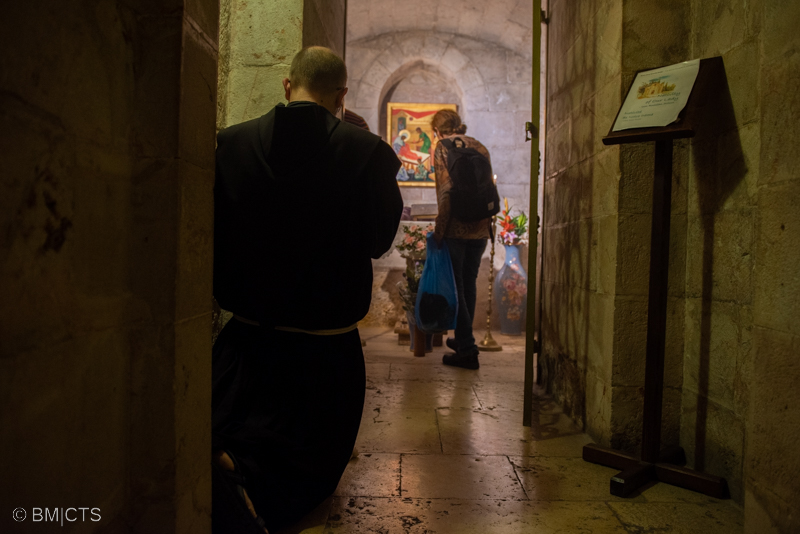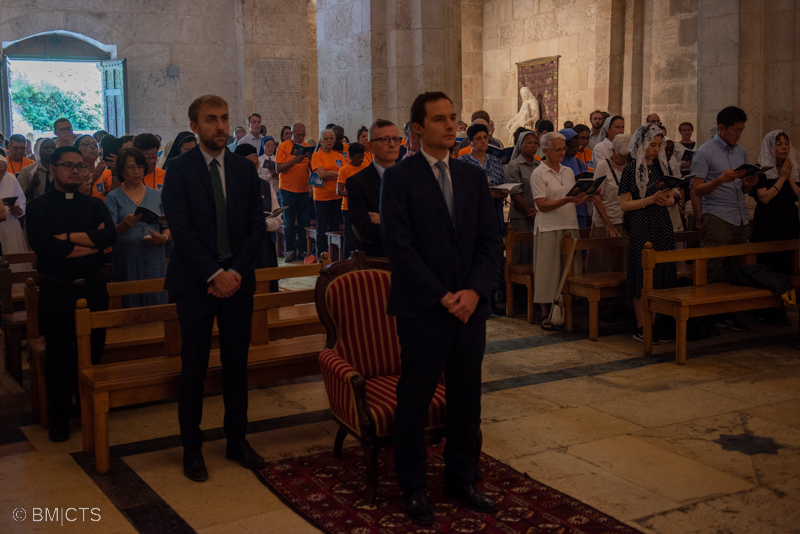
On the liturgical feast-day of the Nativity of the Blessed Virgin Mary, the Franciscans of the Custody of the Holy Land celebrated a solemn mass in the Basilica of St Anne in Jerusalem. This is a tradition that is repeated every 8 September, included in the flow of pilgrims who since the 5th century have venerated this place. This year, a group of the Caritas of La Réunion, a French department in the Indian Ocean, some from the town of Sainte-Anne, was also present at the celebration. At the end of the Mass, before the final blessing, the celebrants went in a procession to the crypt, to the singing of the litany of the saints, to venerate the birthplace of the Virgin Mary.
From as early as the 5th century, the pilgrims came here indicated as the place where there were the probatic pool and the church dedicated to “Mary there where she was born.” The tradition, dating back to the proto-gospel of James (2nd century) believes that here, “not far from the temple” there was the house of St Joachim and St Anne where Mary was conceived and born. With the dedication of a small church on the house of the two saints, in the 4th century, veneration of this place gradually became widespread. This same place is mentioned in the Gospel according to John as that of the healing of the paralysed man, at the pool of Bethesda (Betzaetà or probatic).

The present-day church was built by the Crusaders. When Jerusalem fell into the hands of Salah al-Din, the basilica became a Koranic school. Even during the Muslim period the Franciscans of the Custody tried to gain access to it and celebrate. To do so, they let themselves down from a window in the crypt. It was not until the 15th century, that a firman (decree of the Ottoman sovereign) officially gave the Custody the permission to celebrate here on two occasions: on the day of the Nativity of the Virgin Mary, 8 September, and on that of the Immaculate Conception of the Blessed Virgin Mary, 8 December. This is a tradition that still continues today.
The celebration was presided over by fra Michel Muhindo, of the Custody of the Holy Land, in French, to underline the closeness between France and the Custody of the Holy Land. This bond was sealed by the Treaty of the Capitulations of 1536, with which the Sultan Suleiman the Magnificent entrusted the protection of the Holy Places to France. From that moment, the Custody and France have always worked together for this common objective. Moreover, the basilica has been the property of the French Republic since 1856: the sultan Abdul Majid gave it to Napoleon III for the military support provided in the Crimean War. This is why a representative of the institutions, in this case the deputy consul, Quentin Lopinot, attends the mass. At the end of the Mass, a hymn is sung to ask God to save the Republic of France. At present, the Basilica is entrusted to the care of the Missionaries of Africa (White Fathers).

The figure of Mary and every feast-day related to her, are always linked to her Son, Jesus. Thus, celebrating the Nativity of the Virgin, conceived without sin, means honouring her Divine Motherhood, to which she was called from her mother’s womb, and to which she responded with her “Here I am.” Celebrating the Nativity of Mary,” fra Michel said in his homily, means “rethinking our vocation, It means wondering why we are born. Each of us is born for something.” Each of us has a specific task but also a universal calling: “to be configured with Christ, to be just and enter His eternal Glory.”
Marinella Bandini
